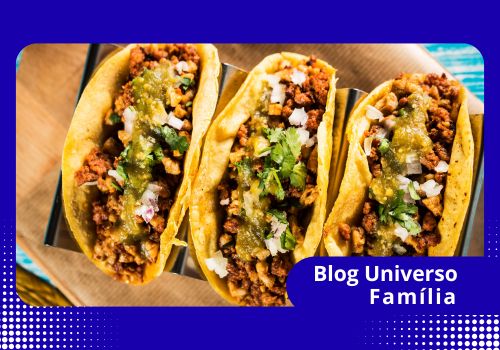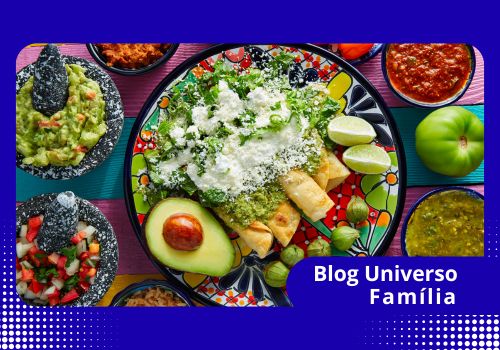Ads
Talk about Mexican gastronomy: tradition and modernity It is to delve into a universe of flavors, history and creativity that continues to conquer the world.

This cultural heritage, recognized by UNESCO since 2010, is not only a form of food, but a reflection of the identity of a country that honors its roots and, at the same time, constantly reinvents itself.
Guide summary: First, we will explore the historical value of Mexican cuisine; then, how innovation has transformed traditional recipes.
Next, we will analyze its economic and cultural impact; finally, we will offer examples, a comparative table, and answers to the most common questions about current Mexican gastronomy.
The living heritage of a nation
Mexican cuisine is a collective expression of centuries of history.
Ads
From pre-Hispanic peoples to contemporary chefs, corn, chili and beans continue to be the heart of the table.
But beyond the ingredients, the strength of this gastronomy lies in its ability to tell who we are and where we are going.
A clear example is the Preparation of mole poblano, a recipe that incorporates more than twenty ingredients, including chocolate and dried chilies.
This dish not only represents the cultural fusion between Spain and indigenous people, but also demonstrates how Mexican cuisine can harmonize contrasts: sweet and spicy, past and present.
In the words of gastronomic historian María del Carmen Ruiz Castañeda, “Mexican cuisine not only nourishes, it also communicates.”
And that can be felt at every fair, market, and family table where flavor becomes memory.
Innovation without losing the soul
Currently, the Mexican gastronomy: tradition and modernity He is experiencing a moment of splendor.
Restaurants like Pujol (CDMX) and Quintonil, included among the best in the world according The World's 50 Best Restaurants 2024They reinterpret ancestral recipes with cutting-edge techniques.
It's not about breaking with the past, but about paying homage to it through innovation.
Contemporary chefs experiment with textures, fermentations, and minimalist presentations without altering the essence of Mexican flavor.
For example, a modern reinterpretation of the taco can incorporate blue corn tortillas with fillings of smoked mushrooms or edible insects, recovering pre-Hispanic ingredients in contemporary formats.
The combination of the ancestral and the modern has allowed Mexico to position itself as a global gastronomic powerhouse.
In fact, according to data from the Mexican Ministry of Tourism (2024), 26% of international tourists who visit the country are motivated by its culinary offerings.
Tradition that evolves with purpose
What's fascinating about Mexican cuisine is that, unlike other cuisines, it is not afraid of change.
It adapts, it merges, but it doesn't lose its roots. In each dish there is a story that is updated, a technique that is reinvented.
The perfect analogy would be to see it as a handcrafted fabricEach generation adds a new thread, maintaining the original design but enriching the whole.
That blend of respect and creativity has allowed Mexican gastronomy to maintain its authenticity in a globalized context.
A recent example is the use of local ingredients under sustainable practices.
More and more chefs are embracing seasonal consumption and regenerative agriculture, strengthening the link between cooking and the environment.
The balance between the local and the global
The international expansion of Mexican cuisine is not only due to its flavor, but also to its adaptability.
Tacos, guacamole, and tamales have crossed borders, but in each place they adopt local nuances.
In the United States, for example, Mexican signature cuisine has grown by 20% in the last decade, according to data from the National Restaurant Association (NRA, 2024).
This global trend has driven the opening of culinary schools specializing in Mexican techniques and the recognition of ingredients such as huitlacoche or nopal in international menus.
However, the challenge remains to preserve authenticity without falling into cultural homogenization.
The cultural and economic impact
The Mexican gastronomy: tradition and modernity It not only generates pleasure, it also boosts the economy.
According to the Mexico Tourism Observatory (2024), the food industry represents more than 13% of the national tourism GDP and employs millions of people, from rural producers to renowned chefs.
The cultural significance of Mexican cuisine transcends the economic. Each dish is a symbol of identity and resilience.
In rural communities, recipes are passed down orally, preserving knowledge that combines techniques, spirituality, and community values.
Comparative table: tradition and modernity in Mexican gastronomy
| Element | Tradition | Modernity |
|---|---|---|
| Main ingredients | Corn, beans, chili | Organic and locally sustainable options |
| Cooking techniques | Comal, molcajete, clay | Sous-vide, fermentation, dehydration |
| Gastronomic spaces | Family kitchens and markets | Gourmet restaurants and creative food trucks |
| Main Characters | Traditional cooks | Contemporary chefs with a global vision |
| Diner experience | Community and tradition | Fusion, aesthetics and sensory experience |
This table summarizes the evolution of Mexican gastronomy, where culinary heritage adapts to new times without losing authenticity.

Read more: Italian cuisine: the most iconic recipes
The strength of the collective
One of the most notable features of Mexican gastronomy is its communal character.
Eating remains a social act, a meeting place.
In many regions, patron saint festivals revolve around food: pozole, tamales or cochinita pibil are not just dishes, but symbols of unity.
Local markets remain the heart of everyday gastronomy. There, fresh ingredients and traditional recipes coexist with innovative offerings.
The coexistence of the old and the new does not generate conflict, but dialogue.
Mexican cuisine as a global identity
On the international stage, the Mexican gastronomy: tradition and modernity It has become a calling card for the country.
It is no coincidence that world-class chefs like Enrique Olvera or Daniela Soto-Innes are ambassadors of a new culinary generation that blends local pride with international techniques.
Every dish that leaves Mexico for the world carries with it a story of cultural fusion, creativity, and resilience.
Mexican cuisine demonstrates that innovating does not mean forgetting, but transforming.
Conclusion
Explore the Mexican gastronomy: tradition and modernity It's about discovering how a country can keep its roots alive while embracing the future.
The key to their success lies in their ability to reinvent themselves without abandoning their essence.
In every tortilla, every sauce or dessert there are centuries of history, but there is also vision, technique and passion for detail.
Is it precisely this blend of the ancestral and the innovative that makes Mexican cuisine one of the most admired on the planet?
Perhaps so, because its greatest strength is remaining human, collective, and deeply authentic.
Read more: The most visited street markets
Frequently Asked Questions (FAQ)
1. Why was Mexican gastronomy declared an Intangible Cultural Heritage of Humanity?
Because it represents a living tradition that combines ancestral knowledge, native ingredients and a unique cultural transmission, recognized by UNESCO in 2010.
2. What distinguishes modern Mexican gastronomy?
The reinterpretation of traditional recipes through contemporary techniques, the use of sustainable ingredients, and the search for holistic culinary experiences.
3. How does Mexican gastronomy contribute to the economy?
It generates direct and indirect employment, boosts tourism and promotes rural development through local food production.
4. Which dishes best represent the fusion between tradition and modernity?
Mole reinterpreted in haute cuisine and gourmet tacos are clear examples of how the essence is preserved with new proposals.
5. What challenges does Mexican gastronomy face in the future?
Maintaining authenticity in the face of globalization and promoting sustainable practices that respect the natural and cultural environment.